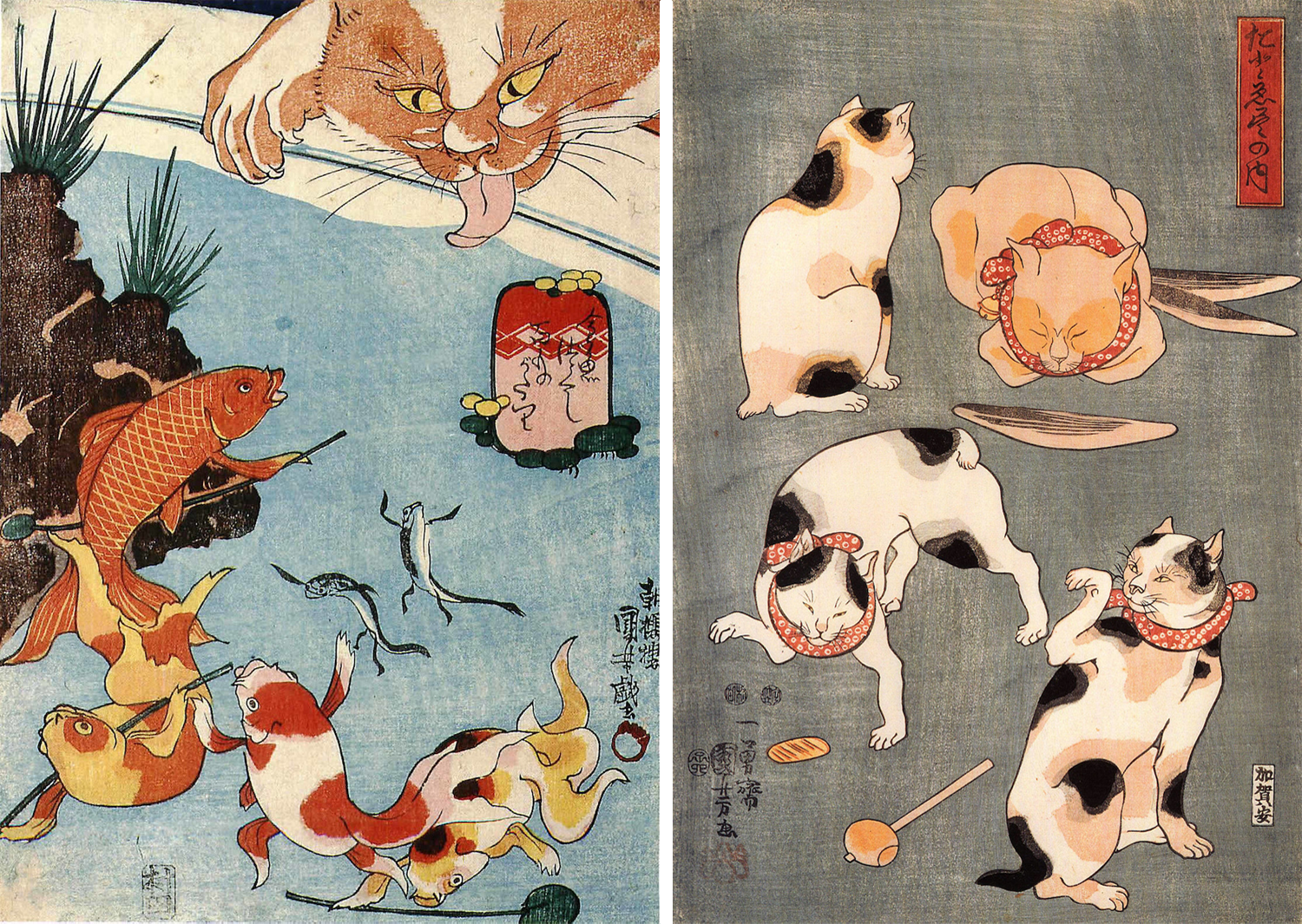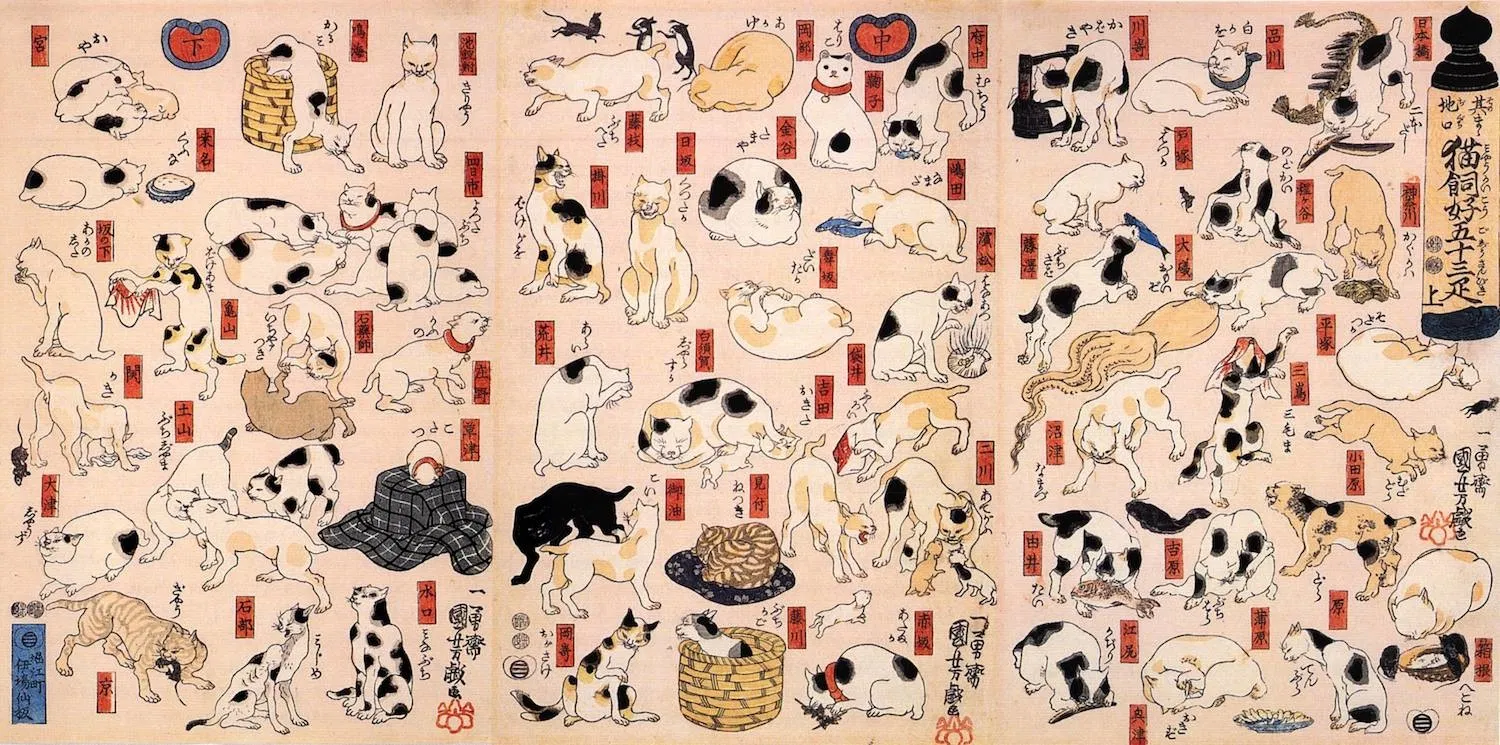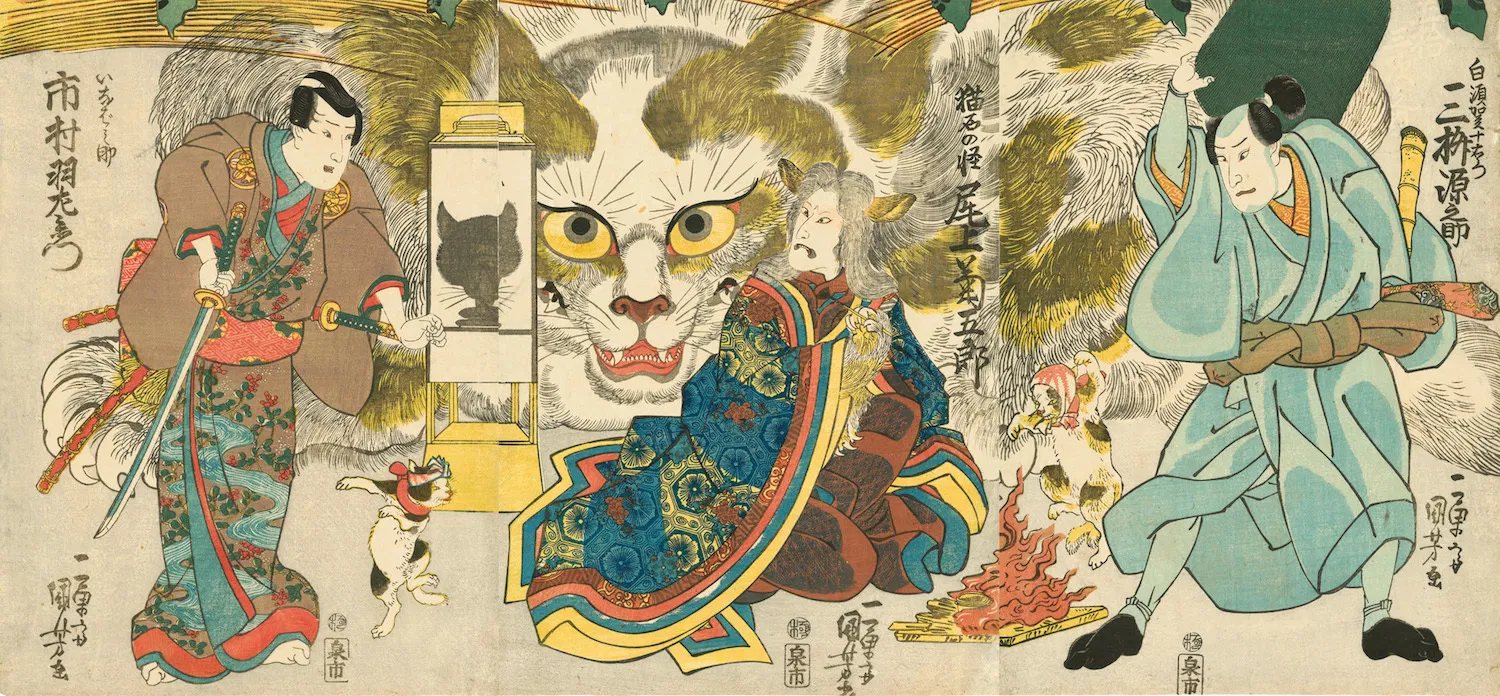
Few countries love cats as much as Japan does, and none expresses that love so clearly in its various forms of art. Though not eternal, the Japanese inclination toward all things feline does extend deeper into history than some of us might assume. “In the sixth century, Buddhist monks travelled from China to Japan,” writes Philip Kennedy at Illustration Chronicles. On these journeys, they brought scriptures, drawings, and relics – items that they hoped would help them introduce the teachings of Buddhism to the large island nation.” They also brought cats, in part as carriers of good luck and in part for their ability to “guard the sacred texts from the hungry mice that had stowed on board their ships.”

Buddhism made a lasting mark on Japanese culture, but those cats practically overtook it. “Today, cats can be found nearly everywhere in Japan,” Kennedy writes. “From special cafés and shrines to entire cat islands. Indeed the owners of one Japanese train station were so enamored with their cat that they appointed her stationmaster.”
By the mid-nineteenth century, the ukiyo‑e woodblock print master Utagawa Kuniyoshi could keep a studio overrun with cats and not seem too terribly eccentric for it. “His fondness for felines crept into his work, and they appear in many of his finest prints. Sometimes they crop up as characters from well-known stories; other times, they are beautifully expressive studies.”

Kuniyoshi made his name illustrating tales of historical warriors, but his artistic capacity also encompassed “everything from landscapes and animals to ghostly apparitions and scenes from popular kabuki theatre.” When the Tokugawa Shogunate sensed its power declining in the 1840s, it banned such “luxuries” as the depictions of kabuki actors (as well as geisha).

To accommodate that demand, Kuniyoshi created humanoid cats endowed with features resembling well-known personages of the era. This in addition to his series Neko no ateji, or “cat homophones,” with cats arranged to spell the names of fish, and Cats Suggested As The Fifty-three Stations of the Tōkaidō, a feline parody of Hiroshige’s earlier Fifty-three Stations of the Tōkaidō. Rat-eating aside, cats aren’t known as especially useful animals, but many a Japanese artist can attest to their inspirational value even today.
A collection of Kuniyoshi’s prints featuring cats can be found in the book, Cats in Ukiyo‑e: Japanese Woodblock Print.

via Illustration Chronicles
Related content:
Cats in Medieval Manuscripts & Paintings
Insanely Cute Cat Commercials from Studio Ghibli, Hayao Miyazaki’s Legendary Animation Shop
Discover the KattenKabinet: Amsterdam’s Museum Devoted to Works of Art Featuring Cats
In 1183, a Chinese Poet Describes Being Domesticated by His Own Cats
Based in Seoul, Colin Marshall writes and broadcasts on cities, language, and culture. His projects include the Substack newsletter Books on Cities, the book The Stateless City: a Walk through 21st-Century Los Angeles and the video series The City in Cinema. Follow him on Twitter at @colinmarshall or on Facebook.


Leave a Reply